Parkinson’s disease (PD) is a progressive neurological disorder affecting movement, muscle control, and balance.
However, its impact isn’t limited to just physical aspects. PD can also significantly affect voice and speech. This is where the importance of vocal exercises comes into play, offering a beacon of hope for those striving to maintain effective communication.
Let’s explore why these exercises are crucial for individuals living with Parkinson’s, recommended vocal exercises, and resources for further assistance.
Impact of PD on Speech and Communication

Parkinson’s impacts speech in several ways. One of the more noticeable effects is the reduction in voice volume and clarity.
The weakening of the vocal cords and respiratory muscles results in a softer, sometimes hoarse voice that can be difficult for others to hear and understand. Additionally, speech may become monotonous due to reduced control over pitch and tone, making it challenging for speakers to convey emotions effectively.
The rate of speech can also be affected, with some individuals speaking more rapidly and others more slowly, further complicating communication.
Parkinson’s can also lead to difficulties with articulation and pronunciation, as the fine motor control needed for clear speech is compromised. This can result in slurred or mumbled speech, making it hard for listeners to discern words.
The combination of these symptoms significantly affects verbal communication, leading to frustration and social withdrawal for those with PD.
Treating Speech Issues for PD

Addressing speech and vocal issues typically begins with a visit to a neurologist. They’ll provide an initial assessment of the individual’s condition and its impact on speech.
From there, the neurologist will likely make a referral to a speech-language pathologist (SLP), a healthcare professional specializing in treating speech, voice, and language disorders.
Speech-language pathologists who work with people living with Parkinson’s are trained to assess and treat the specific challenges associated with the disease.
One of the most recognized and evidence-based treatments they might offer is the Lee Silverman Voice Treatment (LSVT) LOUD program. This program focuses on increasing vocal loudness through intensive exercises tailored to improve vocal volume and clarity.
The LSVT LOUD treatment involves monthly sessions, where you’ll engage in exercises designed to strengthen the vocal cords, improve respiratory control, and enhance speech articulation.
Treatment for speech issues is highly personalized, taking into account the individual’s specific symptoms, goals, and lifestyle. In addition to LSVT LOUD, the SLP may incorporate other techniques to improve articulation, breath support, and non-verbal communication skills.
Technology and assistive devices, such as speech amplifiers or apps designed to support speech practice, might also be recommended as part of the treatment plan.
Vocal Exercises To Try

You can practice various exercises to strengthen different areas of the throat and vocal cords. Remember that a speech-language pathologist will recommend the best vocal exercises for your needs.
Here are a few vocal exercises to practice from the comfort of your home:
1. The Loudness Drill
How to Do It: Sit or stand in a comfortable position. Choose a word or phrase that is easy to say and has personal significance. Say the word or phrase out loud, gradually increasing your volume with each repetition. Aim for a loud, clear voice without straining. Repeat this exercise several times a day.
2. Pitch Glides
How to Do It: Start by producing a comfortable low tone and glide upwards to the highest pitch you can comfortably reach, then back down to the low tone. Imagine it as a siren sound. This exercise helps improve vocal flexibility and control. Repeat several times a day.
3. Breathing Exercises
How to Do It: Focus on diaphragmatic breathing to support your voice. Place one hand on your chest and the other on your belly. Breathe in deeply through your nose, aiming to make the hand on your belly rise more than the one on your chest. Exhale slowly through your mouth. Practice this breathing technique before starting vocal exercises to ensure proper support.
4. Articulation Exercises
How to Do It: Work on pronouncing consonants clearly and with emphasis. Practice tongue twisters or read aloud from a book, focusing on articulating each sound clearly. This can help improve speech clarity.
Benefits of Vocal Exercises for People With PD

Vocal exercises are designed to strengthen the throat muscles, improve vocal loudness, and enhance speech clarity. They are a vital component of a comprehensive treatment plan for Parkinson’s disease, helping individuals maintain their independence and social connections.
Regular vocal exercise can slow the progression of speech difficulties and, in some cases, restore vocal capabilities to a certain extent.
Resources for Speech Therapy & Vocal Exercises
There are several online and in-person resources providing guidance and support for individuals with Parkinson’s looking to improve their vocal abilities:
SpeechVive: An innovative device that encourages louder speech in people living with PD through a reflex. Visit their website for more information on how it works and where to find it.
LSVT LOUD: An evidence-based speech treatment program designed for people with Parkinson’s. Their website offers information on finding certified speech therapists and online exercises.
Parkinson’s Voice Project: A non-profit organization helping people with PD and related movement disorders maintain their speech and communication with the goal of minimizing life-threatening swallowing complications. Learn more here.
SPEAK OUT® & The Loud Crowd® Therapies at Cal State LA: Developed by the Parkinson’s Voice Project, the SPEAK OUT® & The Loud Crowd® therapies are regimens tailored to people with Parkinson’s disease to improve their voicing.
SPEAK OUT!® is usually completed in 12 sessions spanning four to six weeks based on the needs of individual clients. After clients have participated in SPEAK OUT!®, they transition to the LOUD Crowd®. The LOUD Crowd® is a group therapy program meeting once weekly. Both programs are FREE, thanks to a grant from the Parkinson’s Voice Project. Learn more here.
UCLA’s Parkinson’s Disease Clinic: Offers comprehensive care, including speech therapy services tailored for people with Parkinson’s disease. Learn more here.
PCLA prides itself on connecting people in the Parkinson’s community with valuable resources for treating and managing Parkinson’s symptoms, including referrals to speech therapists specializing in Parkinson’s disease. Get in touch today to learn more.
Vocal Exercises for PD: Consistency Is Key

Vocal exercises play a pivotal role in managing the symptoms of Parkinson’s disease related to speech and communication.
By strengthening the muscles involved in speech, individuals can improve their vocal loudness, pitch range, and clarity, significantly enhancing their quality of life.
Remember, consistency is key. Regular practice of these exercises can lead to noticeable improvements in communication abilities, offering hope and empowerment to those affected by Parkinson’s disease.



0 Comments